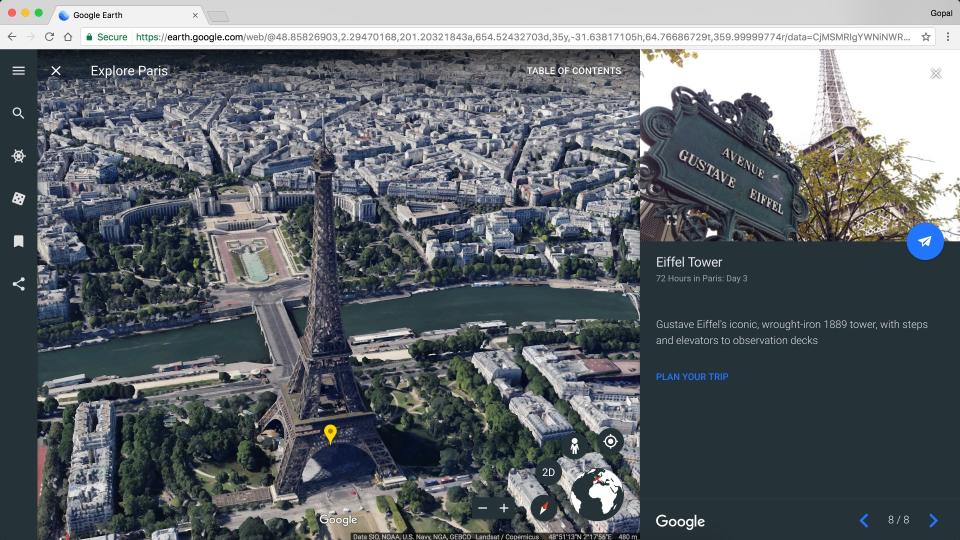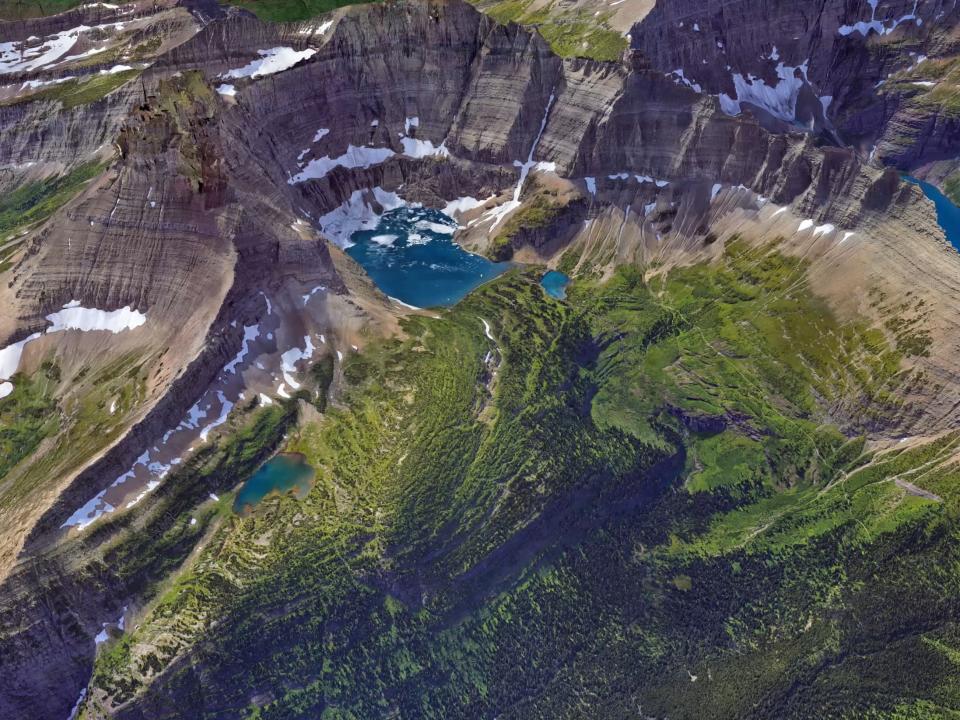The New Google Earth Has 3D Views and Guided Tours
By Sebastian Modak. Photos: Courtesy Google.
For more than ten years, Google Earth, the online tool that uses aerial photography and satellite imagery to map the globe, has been a way to zoom out, explore, and even, on occasion, stumble upon a rainforest that never made it onto maps. For the globally curious, it proved to be the ultimate playground—and it helped that it made you feel productive, learning about the world, even as it sucked hours and hours out of your day. Today, the 21st-century cartographers at Google unveiled a brand new Google Earth, two years in the making and chock-full of updates that translate to even more hours of blissful, mindless wandering...and even, perhaps, some trip planning. Here's what's new on Google Earth, which now runs on Chrome on your desktop—instead of with a separate application—and Android on your phone (an iOS version is forthcoming).
Know before you go
With this update, Google Earth becomes less of a blank canvas more of a real, actionable travel tool. The addition of 'knowledge cards,' Wikipedia-powered morsels of information about different places, means you have a better idea of what you're actually looking at. Say you're doing a quick "flyover" of the neighborhood you'll be staying at in Cape Town. You might discover that your hotel is down the street from the Iziko South African Museum—click on the knowledge card, and you'll learn that it was the first museum in the country, founded in 1825.
Also new is the addition of 'points of interest,' basically a run-down of the must-sees in a place. Zero in on New Orleans, and you'll have the option to cycle through a number of points of interest—the French Quarter, Jackson Square, the National WWII Museum, each with its own knowledge card. Zoom all the way into 'street view' and little blue circles will appear, showing you where you can get even closer—yes, closer!—to the action. Click on one of them and you'll be pulled in, quickly transported into a 360-degree photo of, for example, the inside of the French Quarter's St. Louis Cathedral or one of the ponds in Uptown NOLA's Audubon Park. Based on where you are exploring, the app will offer other related points of interest—if you're checking out the Louvre, it might suggest you take a trip over to the Musée d'Orsay next. A new bookmark feature means you can accumulate all those stumbled-upon street corners, isolated islands, and crop circles in order to one day plan that dream trip. The option to navigate the globe using a new 3D view that has you seeing the world at an angle, in addition to the birds-eye, top-down perspective that existed in the previous version, makes the experience more immersive. When it's toggled and you search for a new place, the slow, dramatic rotation feels cinematic.
When you're done going it alone, how about a guided tour?
Another major addition to the service is the Voyages feature. Here, Google has tapped multiple partners to tell different stories through the platform. Are you a fan of BBC Earth's nature documentary series Planet Earth II? 'Natural Treasures' is a tour of the filming locations featured across the six episodes, featuring video interviews with the producers and footage from the series, as well as some bonus clips. In its 'Travel' section, Google Earth offers curated tours around themes like remote islands, as well as interactive city guides for common destinations like New York and Mexico City. Where else can you travel to Tanzania’s Gombe National Park with Jane Goodall, or take a Sesame Street tour of different cultures, all without leaving your couch?
The ultimate gamble
All of these new features are definitely very fun, and after a couple of hours clicking around the world we've reached peak wanderlust. (What's that tiny speck of land in the middle of the Atlantic Ocean? Take us there, please.) But one feature—a riff off of Google Search's "I'm feeling lucky" button—is helpful in exposing us to destinations that weren't exactly on our radar. After all, when the world's at your fingertips, it's hard to figure out what to add to the travel list. So why not leave it up to chance (or at least some algorithms) and roll the dice? And by roll, we mean click. Click on the dice on the toolbar, and you'll be instantly taken to one of 20,000 far-flung spots curated by the Google Earth team. If we're to stick to the results of this little game of travel roulette, looks like the next place we are headed to is Ko Lanta, an island off of Thailand's Andaman coast, apparently "known for its coral-fringed beaches, mangroves, limestone outcrops, and rainforests." Sounds like a plan.
This story originally appeared on Conde Nast Traveler.
More from Conde Nast Traveler:
Readers' Choice Awards Reveal Best Hotels
10 Ways to Make Your Flight Hate You
The 50 Most Beautiful Places in Europe
The Most Beautiful Coastal Towns in Italy


